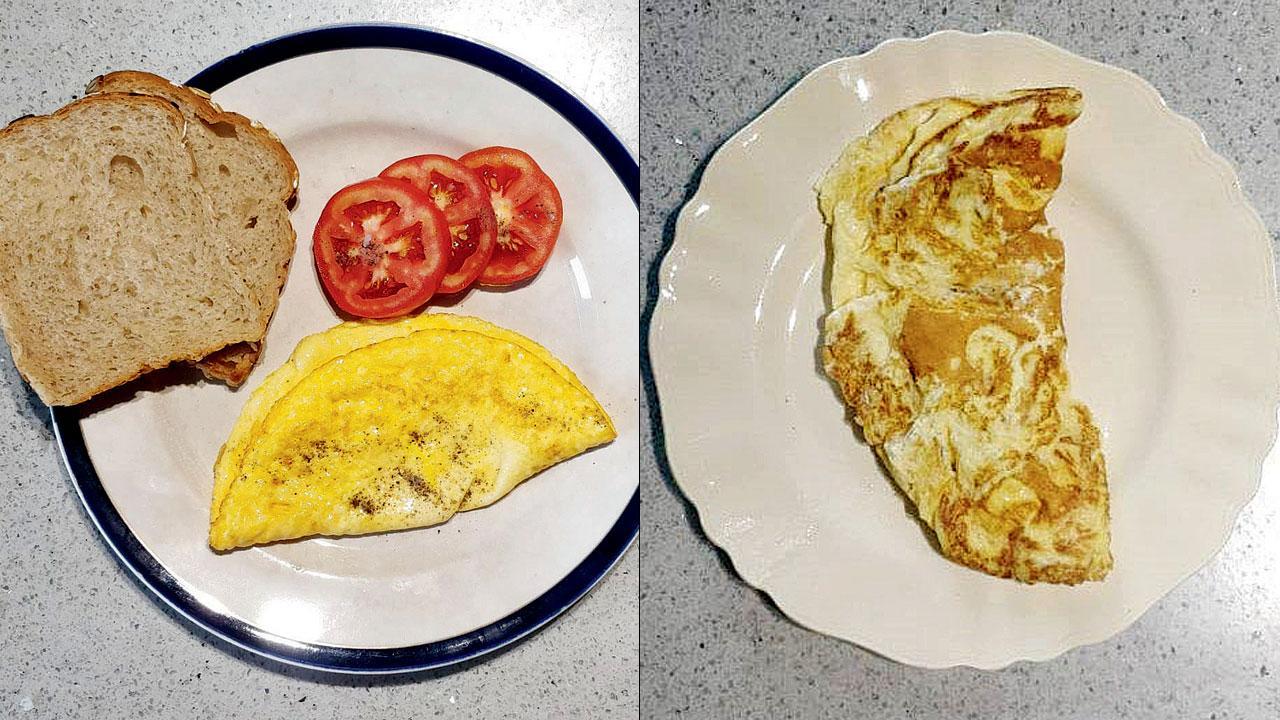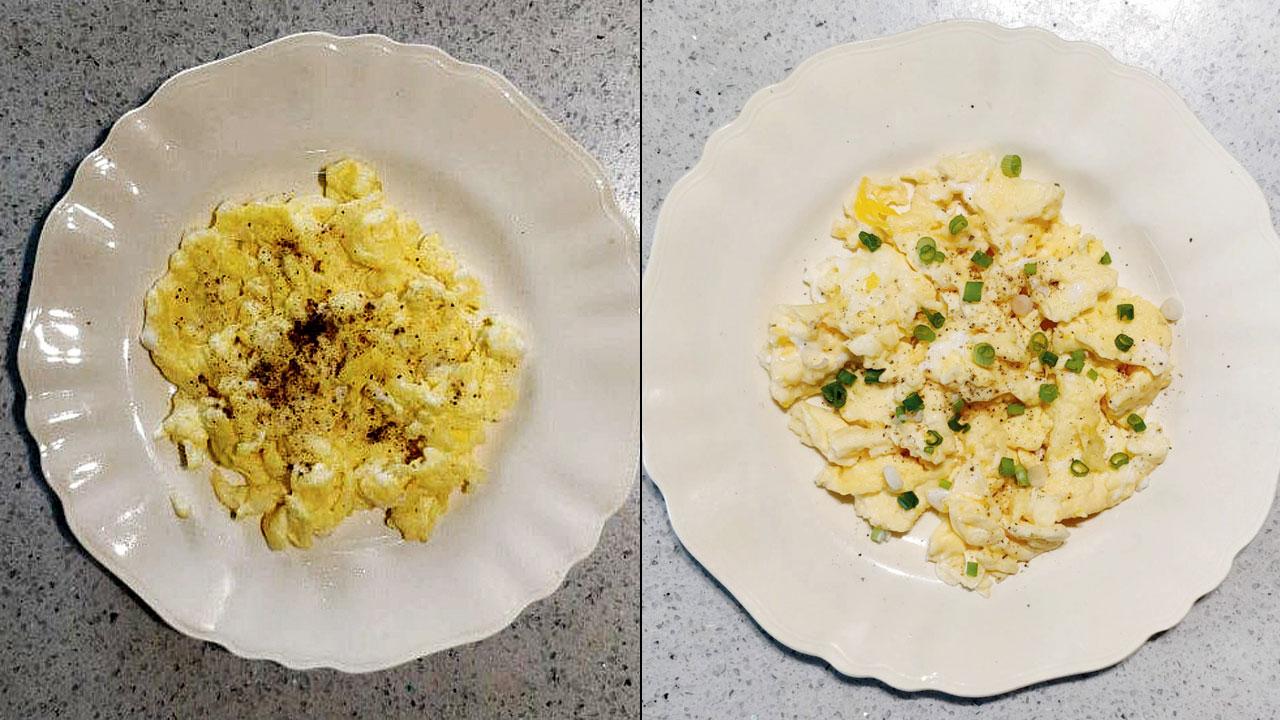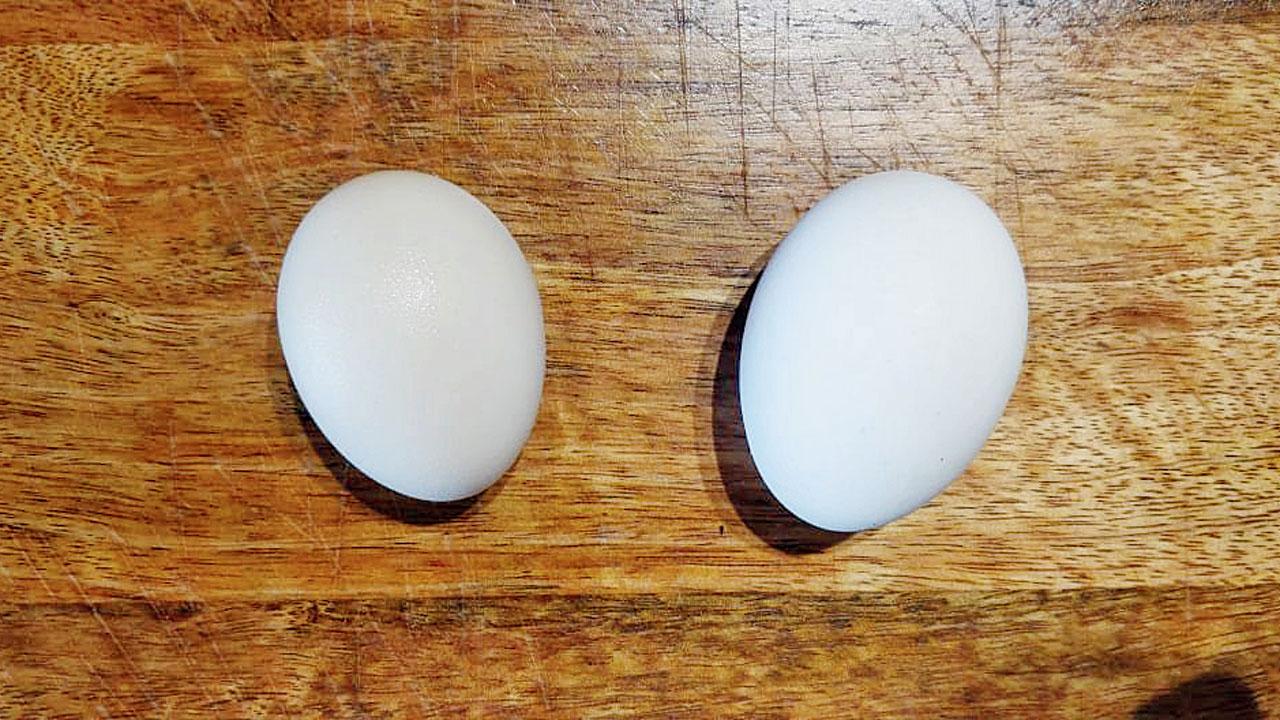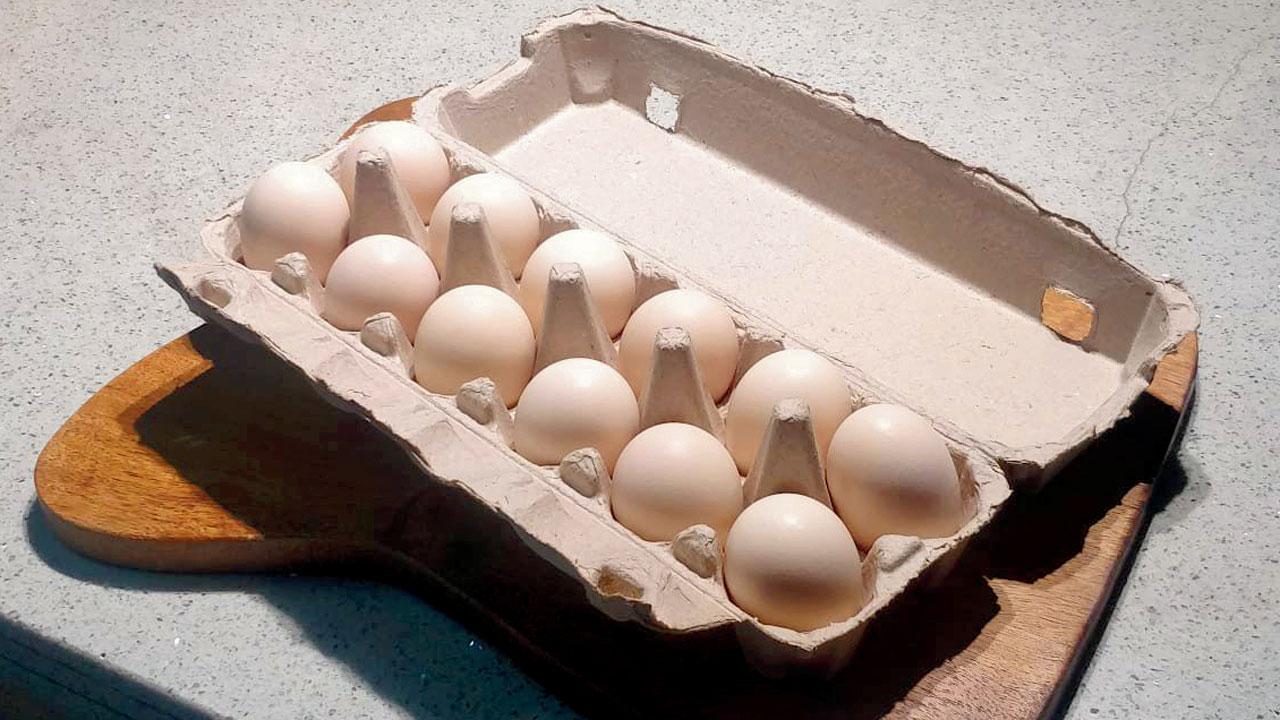We tried a brand of free-range eggs and the regular broiler anda to match taste and texture. Here’s what we found

An omelette made from a free-range egg (right) an omelette made with a caged egg
Eggs are a staple that so many of us cannot do without. Most don’t think about the kind of anda they fry, but some do. So when we learnt that The Good Farmer had launched their free-range eggs, we decided to put them to test.
ADVERTISEMENT

Scrambled eggs made with caged eggs (right) Scrambled eggs made with free-range eggs
At first glance, The Good Farmer eggs were smaller in size, as is consistent with free-range eggs. When cracked, we were pleasantly surprised at the texture and colour. The raw egg white was thicker, and the yolk was orangish yellow, like the sun. The yolk was firm and didn’t break when we tried to separate it from the white with our hands. Raw and cooked, the eggs had less of the egg-y smell that can be possibly attributed to the chickens’ diet. The texture of the caged eggs, on the other hand, was thinner as compared to these free-range ones, and the yolk was a paler yellow. Taste-wise, both hit the mark.

A sunny side-up made with a caged egg. Pics/Tanishka D’Lyma (right) A sunny side-up egg made with a free-range egg
It would take sharp assessment and a picky eater to notice the difference. In a blind test with someone who grew up eating eggs from their own backyard hens, and has eaten both caged and cage-free eggs, the difference was noticeable. The white caged eggs had a more egg-y taste than their free-range counterparts. Compared to the usual variety of free-range eggs, The Good Farmer eggs Cost: less, but are priced higher than the white eggs we buy locally.

A comparison between (left) free-range and (right) caged eggs
Founders and agriculture engineers Dhiraj Verma, Sandesh Nalawade and Meenakshi Varma confirmed our reasoning about the egg-y smell. The hens at their Satara-based farm are given a specific formula of raw rice, corn and other natural additions for their feed outlined by the Central Poultry Development Organisation at Aarey Colony in Goregaon. This would result in the eggs not only having a higher nutrient value but also reduced smell. “The aim was to offer quality eggs at an affordable price, as well as to ensure its freshness,” Varma shares. Their hens are let out of the shed to roam free and graze on tomato, moringa, marigold and other flower and vegetable plants on the farm.
Log on to: @the3goodfarmer
Call: 9076000910
Cost: Rs 144/dozen and Rs 360/30 eggs
Nutrition counts

The Good Farmer eggs come in sturdy paper packaging
Carlyne Remedios, clinical dietitian and founder, nutritionallyyours.in explains that the difference between free-range, cage-free and caged eggs lies in their production and their feed. In case of caged eggs, hens are confined to a space without much interaction with nature. Cage-free hens are kept in a shed. Free-range hens are let out to interact with their environment; they may also be given a more natural feed. This translates to eggs having a higher count of Vitamin A and E, and Omega-3. The exposure to sunlight ensures high Vitamin D making them superior to caged eggs. Since they’re out fighting environmental elements, they also have improved anti-microbial and anti-bacterial properties. Remedios highlights that eggs are an important addition to a balanced diet for kids and adults. “It’s okay if free-range eggs are out of your budget. All eggs are rich in nutrients and protein.”
Buy free-range
Farm Made
Log on to: bigbasket.com
Cost: Rs 269/dozen
Happy Hens
Log on to: yodeli.in
Cost: Rs 150/6 eggs
Ayur eggs
Log on to: bigbasket.com
Cost: Rs 95/6 eggs
Zama Organics
Log on to: zamaorganics.com
Cost: Rs 139/6 eggs
 Subscribe today by clicking the link and stay updated with the latest news!" Click here!
Subscribe today by clicking the link and stay updated with the latest news!" Click here!







